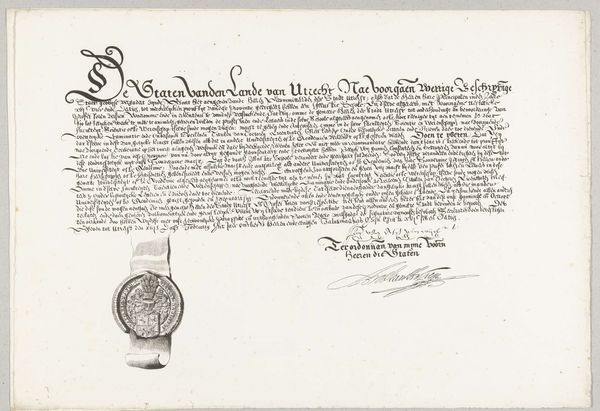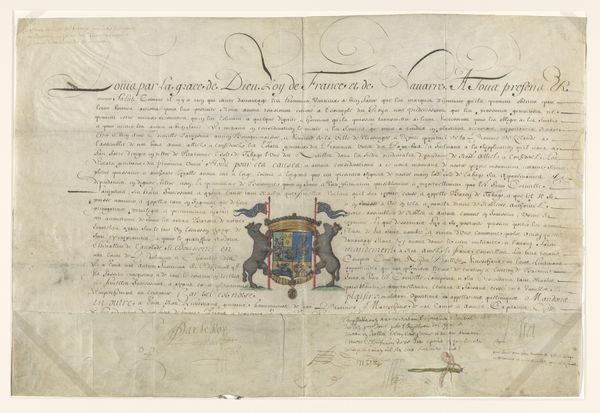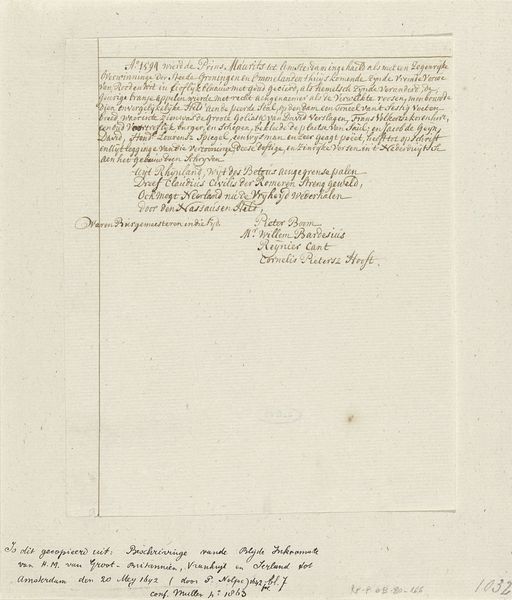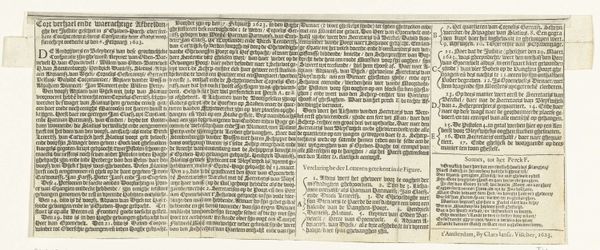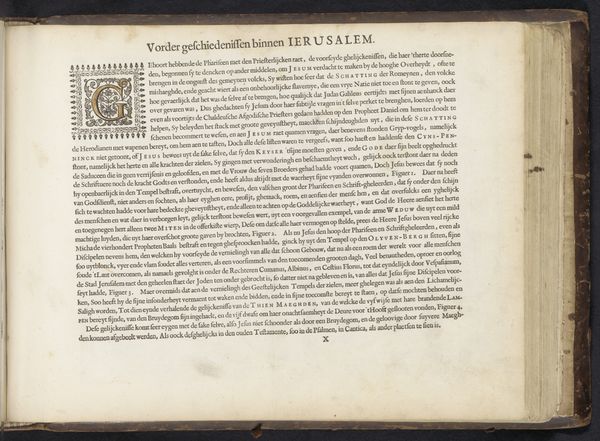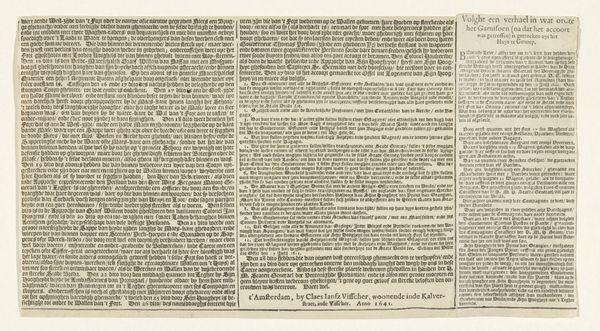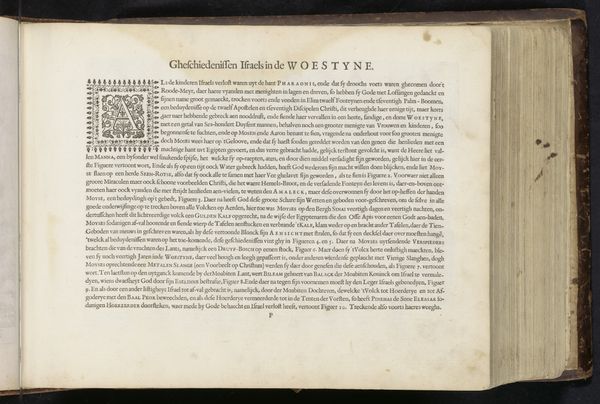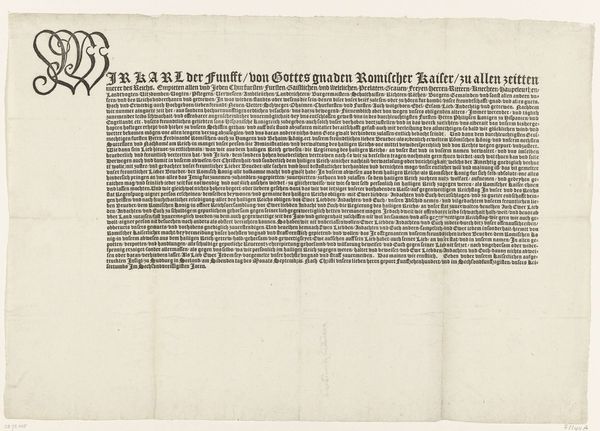
Aflaatbrief gegeven door Joannes Angelus Arcimboldus, 1516 1827 - 1829
0:00
0:00
#
comic strip sketch
#
old engraving style
#
personal sketchbook
#
idea generation sketch
#
sketchwork
#
pen-ink sketch
#
pen work
#
sketchbook drawing
#
storyboard and sketchbook work
#
sketchbook art
Dimensions: height 263 mm, width 350 mm
Copyright: Rijks Museum: Open Domain
This print, depicting a papal indulgence issued in 1516, was produced by Johannes Paulus Houtman in the early 19th century. It's made using etching, a printmaking technique where lines are incised into a metal plate with acid, then inked and printed. The stark lines and precise lettering highlight the document's original function: the sale of indulgences, a controversial practice where people could pay the Church for forgiveness of sins. Houtman's choice of etching, a relatively reproducible medium, mirrors the original document's mass-produced nature, and the commercialization of religious pardons. The act of etching itself, with its careful acid work and press printing, becomes a commentary on the systematic, almost industrial scale of the indulgence trade. The image reminds us of the labor involved, both in the original production of indulgences and in Houtman's artistic interpretation. By focusing on the materials and processes, Houtman prompts us to consider the intersection of faith, commerce, and artistic practice, questioning the boundaries between religious authority, capitalist exploitation, and fine art.
Comments
No comments
Be the first to comment and join the conversation on the ultimate creative platform.
